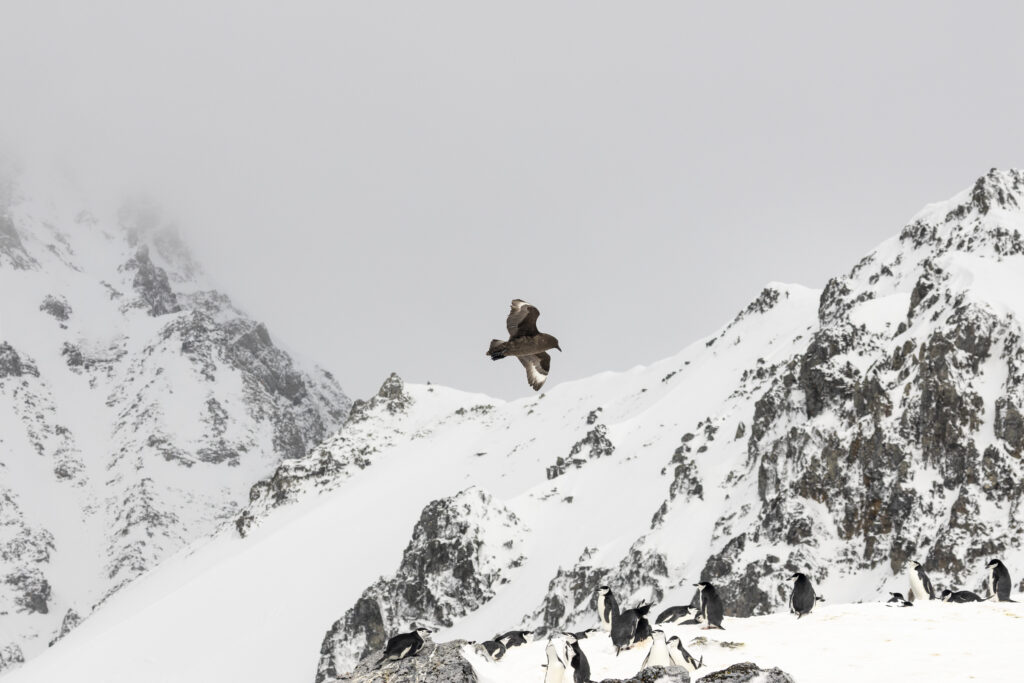The last several years have been fraught with danger for many bird populations thanks to a severe and widespread outbreak of highly pathogenic avian influenza (HPAI) H5N1 that has been ongoing since early 2020. For large flocks of domestic poultry on a global scale, this outbreak has been devastating, and some areas have even toyed with the idea of vaccinating chickens against the deadly and highly transmissible virus. For smaller populations of wild birds, the affects of bird flu have ranged from mild to downright catastrophic. Delicate populations of endangered birds, like the California Condor have had a difficult time keeping up with the losses caused by the illness.
Related Article: Excitement and Tragedy as Chicago Migratory Bird Fallout Event Turns Fatal
Now, highly pathogenic avian influenza has raised a new concern for avian and wildlife conservation groups. For the first time ever, H5N1 has been detected in the Antarctic. A group of Brown Skua, a seabird that looks a bit like a cross between a typical gull and a Giant Petrel, were found to have the virus on Bird Island. Bird Island is a British territory belonging to the South Georgia and South Sandwich Islands. Brown Skuas are migratory, so it is believed that the virus may have been carried in from South America, an area where seabirds and mammals have been hard hit by HPAI.
This find is troubling for several reasons. The first is that it demonstrates the incredible reach that avian influenza has achieved. In just a few short years, this outbreak has ballooned into a global crisis. But perhaps more troubling is the specific threat that its introduction may pose to the Antarctic region. The birds of the Antarctic, including several penguin species, are largely isolated from the rest of the planet. Penguins, like many of the other sea birds in this region, nest in enormous and crowded colonies where the risk of transmission would be exceptionally high. Furthermore, the Antarctic region is also home to wealth of seals. Likely due in part to their close proximity to sea birds, seals have been one of the worst hit groups of animals around the world.
Bird Island lies just 600 miles away from the Falkland Islands. The Falkland Islands are a hotspot of seabird activity with over 220 recorded species including 21 species of resident landbirds and 22 species of breeding seabirds. From albatrosses to penguins to ducks, an outbreak on the islands has the potential to be devastating both to the population of adult seabirds and to the success of their breeding season.
With the recent discovery of Bird Flu on Bird Island, the safety of both migratory and isolated Antarctic bird populations may be at risk.
Popular Article: The Ivory-billed Woodpecker Escapes the Extinct List Again — But Are They Really Out There?

